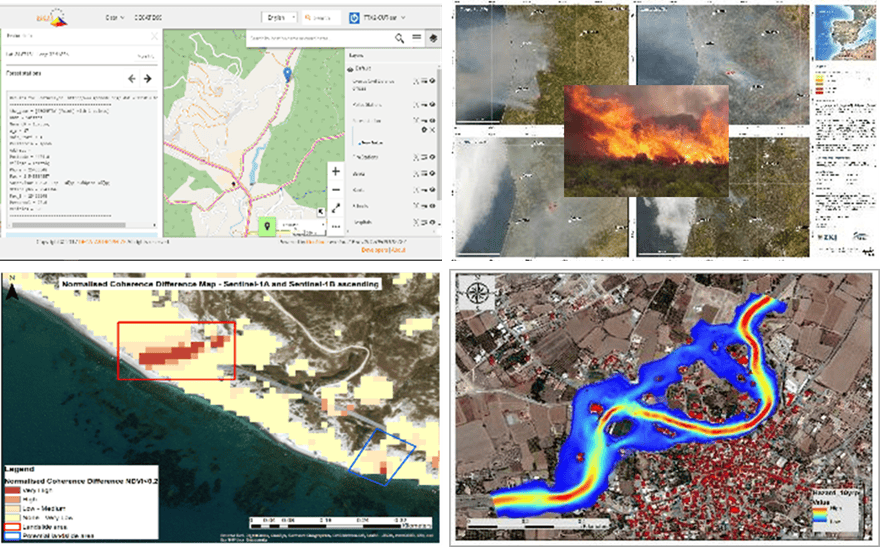Disaster Risk Reduction
In situations of disasters, both environmental and/or anthropogenic, satellite EO data can be used to access and monitor target areas at the right time. The ERATOSTHENES CoE will use EO for Disaster Risk Reduction by increasing coordination of EO to forecast and prepare for disasters, mitigate damage and better manage and recover from disasters, through enhanced preparedness plans, timely activation, and dynamically updated situational awareness throughout the emergency management cycle for early action. Cutting-edge research in this domain can provide improved thematic accuracy, reliability and robustness of disaster risk reduction products and services with the incorporation of uncertainty, for developing resilient cities, shield critical infrastructures, enable business operation continuity after impacted by major disasters.
This cluster will focus on natural and anthropogenic disasters, such as fires, floods, earthquakes, and health issues, such as epidemics, on the following research topics:
- Forest fire monitoring
- Burnt area mapping
- Systematic monitoring of geohazards
- Soil erosion detection
- Soil degradation/desertification
- Floods monitoring
- Epidemics/Health
- Impact assessment
- Disaster management
- Early Warning Systems
- Decision Support Systems
Based on the GAP analysis of the Disaster Risk Reduction cluster, the aforementioned training and future capacity buildings by NOA and other experts, are expected to fulfil the goal of research excellence in the topic of Disaster Risk Reduction, and more specifically in the development of near-real time disaster monitoring platforms; early warning systems; risk assessment frameworks of natural and built environment; disaster prediction models for geo-hazards, fires, floods and epidemics; Integration of risk monitoring frameworks with prediction models; structural condition assessment and health monitoring of critical infrastructure ; enhanced the burned area processing using RStudio, /Jupiter (python); and development of Digital Twins based on /earth observation data.

